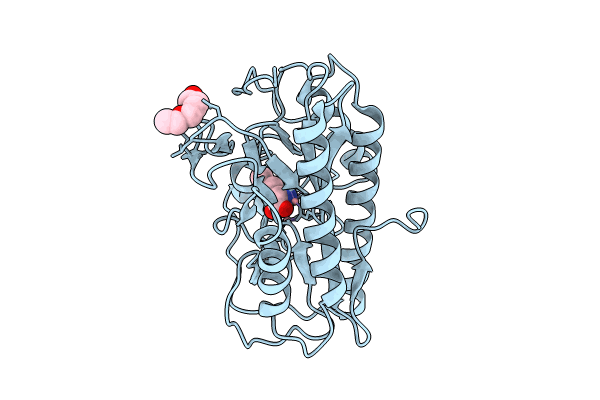
Deposition Date
2023-08-22
Release Date
2024-01-24
Last Version Date
2024-01-24
Entry Detail
PDB ID:
8KHO
Keywords:
Title:
Crystal structure of human methionine aminopeptidase 12 (MAP12) in complex with two Cobalt ions and Methionine
Biological Source:
Source Organism:
Homo sapiens (Taxon ID: 9606)
Host Organism:
Method Details:
Experimental Method:
Resolution:
1.45 Å
R-Value Free:
0.20
R-Value Work:
0.18
R-Value Observed:
0.18
Space Group:
C 1 2 1


